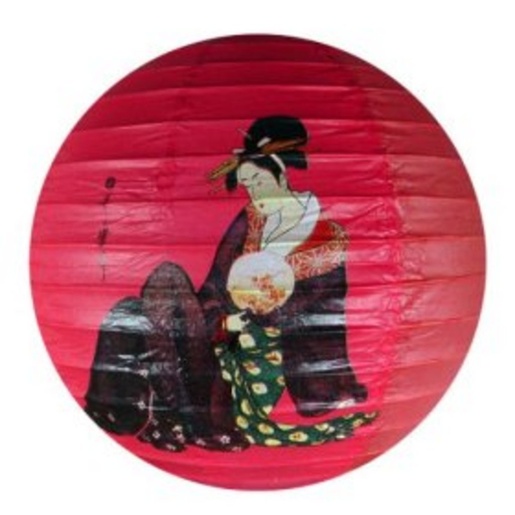
|
||
 Enlarge
Enlarge
|
Licensing | |
On Amazon.com, one can buy a “Kimono Girl Paper Lantern – Red” for under US$10. The most Japanese aspect about this product is the kimono. The producer is an American company, Wrapables. The fact of the matter is, one could easily market this lantern simply as Asian paper lanterns (as some other sites do, i.e. www.asianideas.com). Yet the lantern is marketed as a Japanese lantern, and clearly the Japanese “cultural odor,” as Koichi Iwabuchi calls it in his book, Recentering Globalization, is important to American consumers, else it would simply be marketed as a lantern, aesthetically pleasing and perhaps with an Asian flavor, but not specifically Japanese. The Japanese “cultural odor” of this particular lantern, is, of course, enhanced by the fact that it is a Kimono Girl lantern. This title plays into two of the West’s most intense fascinations with the exotic other Japan: fashion and sexuality. The kimono, so elaborate and radically different than any style of dress in the West, has long been a symbol of Japan, an object that garnered immediate recognition by most Westerners as innately Japanese. The specification that the figure on the lantern is wearing a kimono adds not only to the “cultural odor” of the lantern, but also to its perceived authenticity. If the lantern were marketed simply as an Asian lantern, and no mention was made as to the exact origin of the figure or the clothing, many Westerners would feel that the lantern was not Asian enough, lacking a recognizable symbol of Asianness. The kimono provides this symbol. The girl also appeals to the Japanophilia of the West. With unmistakably Asian features, the girl on the lantern plays into the Western feminization and sexualization of Japan. Westerners have long been fascinated with the idea of the geisha. By placing the figure on the lantern and labeling it as a girl, the producers/marketers feed this fixation with the mystical, exotic Oriental woman. In this sense, perhaps, it is less the Japanese “cultural odor” than the Asian “cultural odor” that is important. Whether it’s Japanese or Asian, however, the main point is that this “cultural odor” is clearly important in getting Americans to consume the lantern, and that establishing this “cultural odor” is done by playing to particular aspects of American fascination with Japan.

This work is licensed under a Creative Commons Attribution-No Derivative Works 2.5 License
 jdecker
—
更新日 3月 30 2011 8:01 p.m.
jdecker
—
更新日 3月 30 2011 8:01 p.m.
Part of these albums

|
Japanophilia mpitelka
mpitelka
|

|

 James Irvine Garden
James Irvine Garden
 Journal feed
Journal feed
